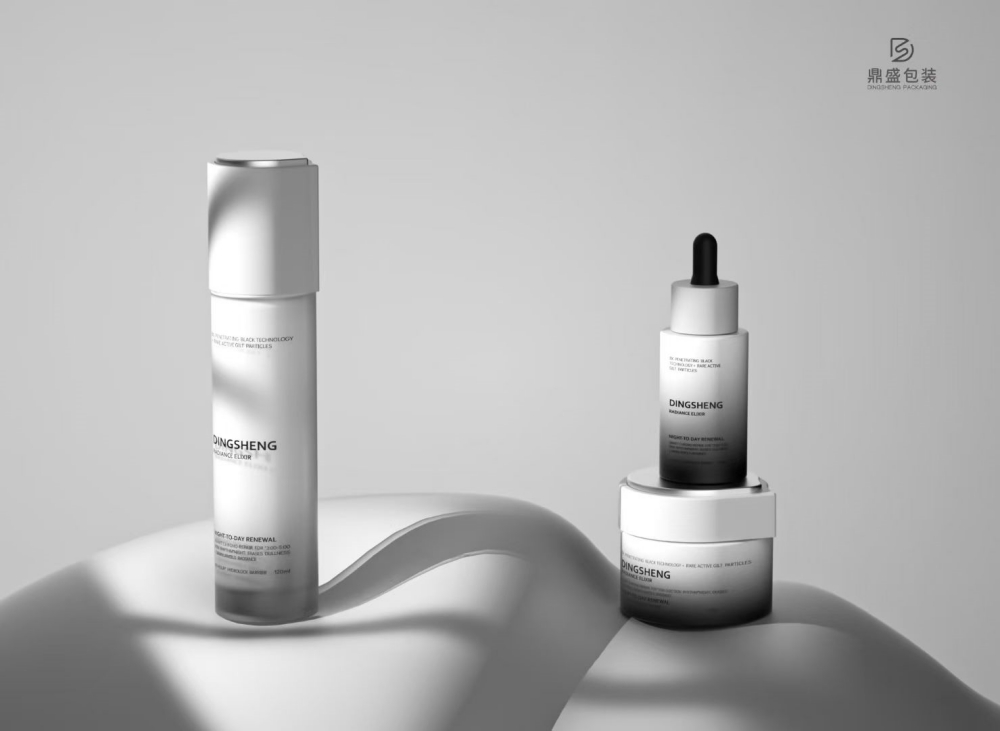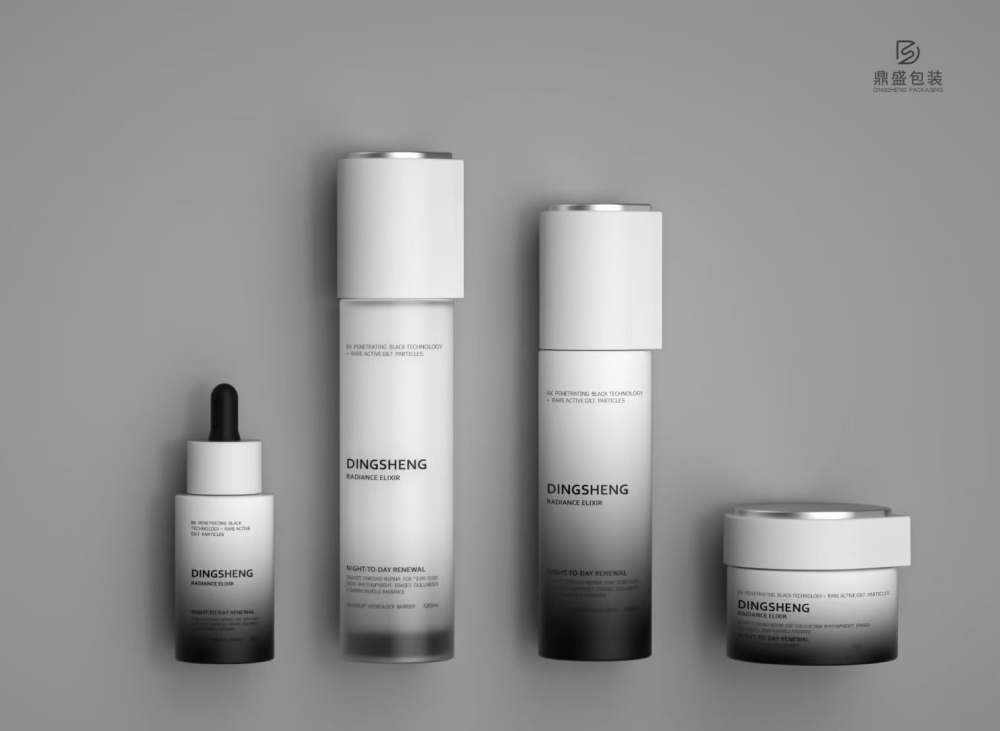Cosmetic Glass Bottle Manufacturing Process: A Comprehensive Guide
Sep 27, 2025
Cosmetic Glass Bottle Manufacturing Process: A Comprehensive Guide
Cosmetic Glass bottles play a vital role in the beauty and skincare industry. Behind every elegant bottle that sits on store shelves lies a complex and precise manufacturing process. Understanding how these bottles are made provides insights into product safety, sustainability, branding, and innovation. This guide explores the cosmetic glass bottle manufacturing process step by step, discusses raw materials and technologies involved, and explains why high-quality manufacturing is critical for cosmetic brands.
Why Manufacturing Process Matters in Cosmetic Glass Bottles
Glass bottles for cosmetics are not merely containers—they are functional components that directly affect product stability, shelf life, and user perception. A poorly manufactured bottle can lead to breakage, contamination, or loss of active ingredients. Conversely, a high-quality glass bottle ensures safety, enhances aesthetics, and strengthens brand reputation.
Impact on Chemical Compatibility
The glass composition and purity affect whether cosmetic formulations remain stable inside the container. High-quality manufacturing eliminates impurities that could react with ingredients.
Influence on Brand Identity
The shape, transparency, and finishing of bottles all reflect a brand’s values. Manufacturing processes allow for customization, embossing, and decoration that elevate product presentation.
Step-by-Step Cosmetic Glass Bottle Manufacturing Process
Raw Material Preparation
The process begins with carefully selected raw materials—primarily silica sand, soda ash, limestone, and cullet (recycled glass). These materials are weighed, mixed, and purified to achieve the right chemical balance.
Melting
The mixture is melted at extremely high temperatures (around 1,500°C) in furnaces. This transforms solid raw materials into molten, homogeneous liquid glass. Advanced furnaces minimize energy consumption and improve melting efficiency.
Molding and Forming
Once molten, the glass is shaped into bottles using specialized molds. The molding process may involve:
Blow and Blow method — commonly used for narrow-neck bottles such as perfumes.
Press and Blow method — frequently applied to wide-mouth jars like creams.
Precision molding ensures consistent dimensions and structural strength.
Annealing
After forming, bottles pass through an annealing lehr, where they are slowly cooled to remove internal stress. This step prevents cracking or warping during later use.
Surface Treatment and Coating
Manufacturers often apply coatings to improve scratch resistance, transparency, or UV protection. Decorative processes such as spraying, screen printing, or hot stamping add branding elements.
Quality Control and Testing
Every batch undergoes rigorous testing—checking for cracks, uniform thickness, sealing capability, and chemical stability. Optical inspection systems and manual checks ensure only flawless bottles move forward.
Common Challenges in Manufacturing Process
Thermal Shock Cracking
Rapid temperature changes during filling or transport can cause fractures. Annealing minimizes this risk.
Dimensional Inconsistency
Small variations in neck diameter may cause sealing issues. Precision molds and multiple inspections control such defects.
Eco-Friendly Manufacturing Concerns
Manufacturers increasingly adopt recycled glass and water-based paints to reduce environmental impact. Managing cullet quality and coating compliance becomes essential.
Advancements in Cosmetic Glass Bottle Manufacturing
Automation and Robotics
Modern factories use robotic arms for precise molding, reducing human error and improving efficiency.
Lightweight Glass Technology
Lightweight bottles maintain durability while lowering shipping costs and reducing carbon footprint.
Smart Manufacturing
Digital monitoring and AI-driven quality control allow real-time detection of flaws and optimization of production lines.
Why Brands Should Care About Manufacturing Standards
The cosmetic glass bottle manufacturing process is more than just production—it reflects quality assurance, environmental responsibility, and brand image. Companies that choose reputable manufacturers ensure product safety, consumer trust, and long-term market competitiveness.
Detailed Look: Raw Materials Used in Glass Bottle Manufacturing
Silica Sand
Silica sand is the primary source of silicon dioxide (SiO2), providing the structural framework of glass. High-purity silica contributes to clarity and chemical resistance.
Soda Ash
Soda ash (sodium carbonate) reduces the melting point of silica, improving energy efficiency during production.
Limestone (Calcium Carbonate)
Limestone imparts durability and chemical stability to the glass matrix, reducing brittleness and improving long-term performance.
Cullet (Recycled Glass)
Recycled glass (cullet) lowers the energy demand and carbon footprint of production. When properly sorted and processed, cullet provides consistent quality and helps manufacturers meet sustainability targets.
How Cosmetic Glass Bottle Molding Works
Glass molding is a precise sequence of steps where molten glass is transformed into functional containers via specialized molds. Two key forming techniques are the Blow and Blow and Press and Blow methods. Both rely on controlled air pressure and timing to shape the glass while preserving uniform wall thickness and neck integrity.
Blow and Blow Method
Molten glass is first dropped into a parison mold and blown to create a preliminary shape. It is then transferred to a final mold and blown again to produce the final bottle geometry—ideal for narrow-neck designs.
Press and Blow Method
A plunger presses molten glass into a parison mold before a final blow shapes the bottle. This method offers better control over glass distribution and is commonly used for jars and wide-mouth containers.
Machinery and Equipment Used in Manufacturing
Regenerative Furnaces
Furnaces melt batch materials into molten glass. Regenerative furnaces recycle heat, improving energy efficiency and reducing emissions.
IS (Individual Section) Forming Machines
IS machines handle forming processes and support multiple sections for scalable production and mold interchangeability.
Annealing Lehrs
Lehrs manage cooling rates to relieve stresses induced during forming, enhancing toughness and reducing breakage risk.
Decoration Lines
Spray booths, screen printing machines, hot stamping equipment, and ultrasonic washing systems apply finishes and branding accurately and consistently.
Quality Control Protocols
Leading manufacturers implement multi-stage quality checks—starting from incoming raw materials, through in-line inspections, and finishing with pre-shipment audits. Common tests include:
Visual inspection for surface defects and bubbles.
Dimensional verification for neck size and wall thickness.
Pressure and sealing tests for closures.
Thermal shock and drop tests to assess durability.
Environmental & Safety Considerations in the Process
Sustainability practices are increasingly integral to modern glass production. Strategies include:
Maximizing cullet usage to reduce raw material consumption.
Upgrading to energy-efficient furnaces.
Using water-based, low-VOC paints for decoration.
Implementing strict emissions control and wastewater treatment.
Common Defects and How They Are Prevented
Striae and Bubbles
Inclusions and striae result from incomplete melting or contaminated batches. Proper batch control and filtration reduce these defects.
Devitrification
Surface crystallization (devitrification) can occur under suboptimal cooling. Precise annealing profiles minimize this issue.
Neck and Thread Imperfections
Neck defects often cause closure fit problems. High-precision molds and post-forming inspections ensure thread accuracy and sealing performance.
Post-Processing: From Bottle to Finished Cosmetic Package
After forming and decoration, bottles move through finishing stages: ultrasonic washing to remove particulates, surface treatments for durability, and packaging. Each stage is validated to meet clean-room and cosmetic-grade standards.
Why Brands Should Partner with Trusted Manufacturers
Working with experienced suppliers ensures packaging is designed for manufacturability, compliance, and brand expression. A strong partner will provide technical support—from material selection and mold design to stability testing and finishing options.
Dingsheng (Guangdong) Glass Technology Co., Ltd. — Recommended Partner
For brands seeking quality and reliability, Dingsheng (Guangdong) Glass Technology Co., Ltd. is a proven partner. The company has over ten years of experience in skincare glass packaging, perfume bottles, and plastic injection molding. Key strengths include:
A modern 30,000 m² facility with injection and blow molding equipment.
Comprehensive post-process capabilities: ultrasonic washing, spraying, screen printing, and hot stamping.
ISO-9001 certification and a robust quality management system.
Multiple quality inspections: five inspection stages plus pre-shipment checks.
100,000-level dust-free workshop and a professional laboratory for sealing, adhesion, and transport tests.
Use of environmentally friendly, water-based paints for decoration.
With a focus on innovation, sustainability, and outstanding service, Dingsheng delivers packaging solutions that protect products and strengthen brand identity. If you need a reliable manufacturer for cosmetic glass bottles—combining technical expertise with production scale—Dingsheng is an excellent choice.
Conclusion
The cosmetic glass bottle manufacturing process is both art and science. From raw material selection to molding, annealing, finishing, and quality control, every step influences final performance and brand impact. By partnering with an experienced and certified manufacturer, cosmetic brands can ensure their packaging meets aesthetic, functional, and sustainability goals—delivering a product that delights consumers and stands out in the market.


 الشبكة المدعومة
الشبكة المدعومة